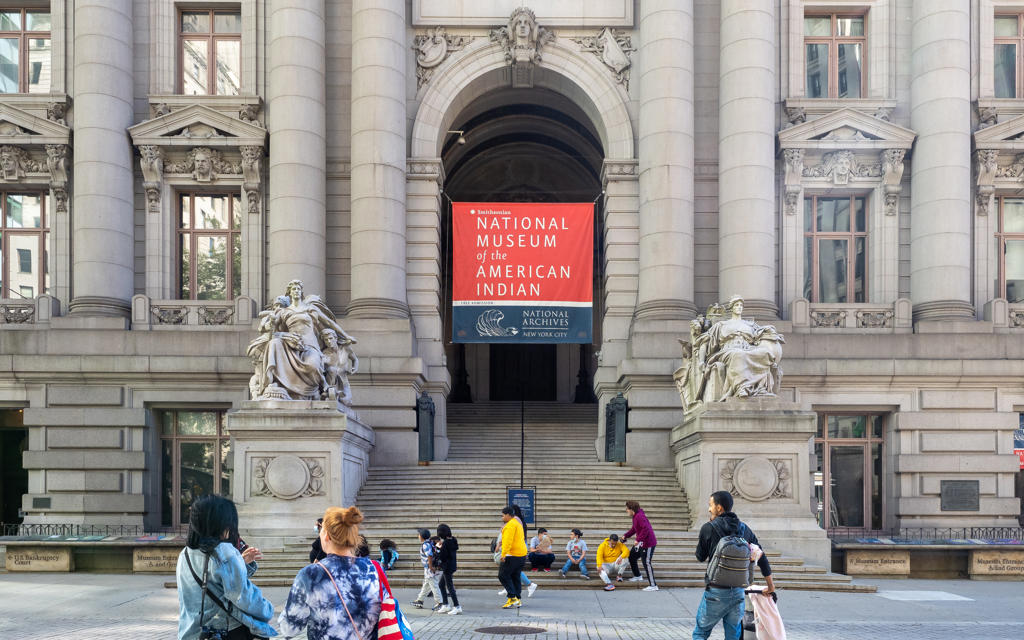About National museum of the american indian
The curved limestone façade of the National Museum of the American Indian mimics the natural shapes of wind-swept rock formations. Its design, by architect Douglas Cardinal, reflects the connection between Native peoples and the land. The building’s organic lines stand in contrast to the rigid geometry of surrounding structures, creating a space that feels alive and rooted in nature. The museum’s entrance faces east, honoring the direction of the rising sun, a sacred element in many Native cultures.
History and Purpose
Opened in 2004, the museum is part of the Smithsonian Institution and serves as a space to celebrate and preserve the cultures, histories, and contributions of Indigenous peoples across the Americas. It houses over 800,000 objects, making it one of the largest collections of Native artifacts in the world. The museum’s mission is not only to display these items but to amplify Native voices, ensuring that their stories are told by their communities.
Plan your perfect trip to New York with Travo! Download now and start exploring.
Living Cultures
Inside, the exhibits highlight the diversity of Native cultures, from the Arctic to South America. The "Nation to Nation" exhibit explores treaties between Native nations and the U.S. government, showing how these agreements shaped history and continue to impact Native communities today. The "Our Universes" exhibit delves into Indigenous cosmologies, showcasing how Native peoples understand the world through spiritual and cultural lenses. These displays emphasize that Native cultures are not relics of the past but vibrant, living traditions.
Architectural Symbolism
The building itself is a work of art. Its rounded forms and flowing lines symbolize harmony and interconnectedness, values central to many Native philosophies. The surrounding landscape features native plants, a waterfall, and a wetland area, creating a natural environment that complements the museum’s themes. The design invites visitors to reflect on the relationship between humans and the earth, a concept deeply embedded in Indigenous worldviews.
Details That Speak
Look closely at the Potomac Atrium, the museum’s central gathering space. Its soaring ceiling and circular design evoke a sense of openness and community. The intricate carvings and patterns on display throughout the museum tell stories of resilience, identity, and connection. The museum’s use of natural light enhances the experience, illuminating artifacts and creating a warm, welcoming atmosphere.
Present-Day Significance
The museum is more than a repository of artifacts; it is a platform for dialogue and education. Native artists, scholars, and leaders frequently collaborate on exhibits and programs, ensuring that the museum remains a dynamic space for cultural exchange. Visitors leave with a deeper understanding of the richness and complexity of Native cultures, as well as the ongoing challenges faced by Indigenous communities. The National Museum of the American Indian stands as a testament to the enduring legacy and contributions of Native peoples to the world.

Map loading...
Location
1 Bowling Green, 10004, City of New York
